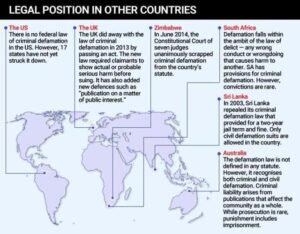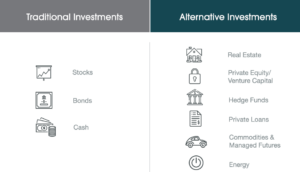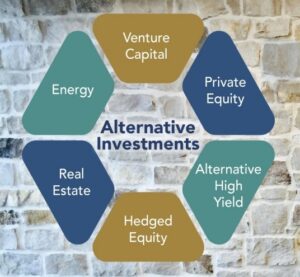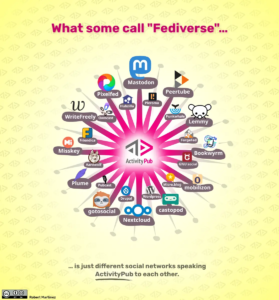Topics
- Defamation in India
- Digital Health Incentives Scheme
- AIF and VCF
- DRACO Programme
- Fediverse
Defamation in India
News:
The Supreme Court has temporarily suspended the conviction of Rahul Gandhi, a prominent Congress leader, in a criminal defamation case related to his alleged ‘Modi’ surname remark made during a political rally in 2019.
Rahul Gandhi contested the Gujarat High Court’s decision of July 7, which upheld his conviction. He questioned how an “undefined amorphous group” could be subjected to defamation in the first place.
Basics
- Defamation in India refers to the communication of false statements that harm the reputation of an individual person, business, product, group, government, religion, or nation.
- The country’s legal system recognizes defamation as both a civil wrong and a criminal offense.
Criminal Defamation:
- Under section 499 of the Indian Penal Code (IPC), criminal defamation is specifically defined as an offense.
- This includes defamation through spoken or written words, signs, or visible representations.
- Section 500 of the IPC outlines the punishment for defamation, which includes simple imprisonment for up to two years, a fine, or both.

Exceptions to Defamation:
- Section 499 of the IPC provides certain exceptions to defamation.
- These exceptions apply to cases where the imputation of truth is necessary for the public good, such as matters relating to the conduct of government officials, public questions, or the merits of public performances.
Civil Defamation:
- Apart from criminal defamation, India also recognizes civil defamation based on tort law.
- Unlike criminal defamation, civil defamation is determined through case laws rather than specific statutes.
Supreme Court View:
- In the landmark Subramanian Swamy vs. Union of India case (2014), the Supreme Court upheld the Constitutional validity of sections 499 and 500 (criminal defamation) in the IPC.
- The Court emphasized that an individual’s fundamental right to live with dignity and reputation should not be compromised merely to protect another individual’s freedom of expression.
- In another significant case, the J Jayalalithaa case (2016), the Supreme Court criticized Tamil Nadu Chief Minister J Jayalalithaa for misusing the criminal defamation law to suppress criticism and limit democracy.
- The Court asserted that public figures must be open to criticism and scrutiny as part of a democratic society.
Conclusion:
Defamation laws in India serve to protect individuals and entities from false statements that could harm their reputation.
The country’s legal framework acknowledges both criminal and civil aspects of defamation and has been reinforced by notable Supreme Court decisions.
Digital Health Incentives Scheme
News:
In a recent update, the National Health Authority (NHA) has officially announced the extension of its acclaimed Digital Health Incentives Scheme (DHIS) as a part of the ongoing Ayushman Bharat Digital Mission (ABDM).
This extension grants beneficiaries continued access to the scheme’s benefits until December 31, 2023. The decision comes as a welcome move to further promote digital healthcare initiatives and improve the overall health landscape in the country.
Introduction
- The Digital Health Incentive Scheme (DHIS) is a financial incentive scheme launched by the National Health Authority (NHA) to promote the adoption of Ayushman Bharat Digital Mission (ABDM) among the stakeholders of the digital health ecosystem.
- ABDM is an initiative to create a digital health infrastructure for the country, which includes unique health IDs, personal health records, health facility registry, and electronic consent framework.
Objective
- The objective of DHIS is to give a further boost to digital health transactions in the country and to encourage the majority of healthcare providers to adopt digital health and make available the benefits of digital health for all the citizens of India.
- The scheme also aims to support the providers of digital health solutions such as Hospital/Health Management Information System (HMIS) and Laboratory Management Information System (LMIS) to make available the right software at an affordable cost.
Eligibility
- The scheme is open to all health facilities like clinics, nursing homes, hospitals, and laboratory/radiology diagnostics centres that are registered on Health Facility Registry (HFR), which is a repository of all healthcare facilities in the country.
- The scheme is also open to entities providing ABDM enabled digital solutions (Digital Solution Companies or DSCs), which are registered on ABDM Sandbox, which is a testing environment for digital health solutions.

Benefits
- Earn incentives for digitization: The scheme provides financial incentives to all the participating healthcare facilities and DSCs based on the number of digital health transactions done using ABDM enabled software.
- The incentives are calculated based on a formula that takes into account the type and size of the facility, the number of transactions, and the duration of the scheme.
- Reimburse the expenses incurred for digitization: The scheme also reimburses the expenses incurred by the healthcare facilities and DSCs for adopting ABDM enabled software, such as installation, training, maintenance, and upgradation cost.
- Efficiency in healthcare delivery: The scheme enables seamless access to patient’s longitudinal health records and removes hassles in the healthcare process such as registration, appointment, consultation, IPD admission, discharge, etc
- Building a robust digital health ecosystem: The scheme contributes to building a robust digital health ecosystem across different levels of healthcare facilities and facilitates interoperability and standardization of data.
- Improved quality of care: The scheme supports evidence-based, accessible, and good quality care for patients and enhances their ease of access to digitized health records and improved healthcare delivery.
Implementation
- The scheme is implemented by NHA in collaboration with state health agencies and other stakeholders.
- The scheme is effective from 1st January 2023 and has been extended till 31st March 2024.
AIF and VCF
News:
In a recent development, the Securities and Exchange Board of India (SEBI), the capital markets regulator, has made a significant change to the approval process for alternative investment funds (AIFs) and venture capital funds (VCFs) looking to make overseas investments.
The approval’s validity period has been reduced from six months to four months, starting from the date of issuance.
This move aims to streamline and expedite the overseas investment process for AIFs and VCFs while ensuring better regulatory oversight and adherence to timelines. It is expected to have an impact on the investment strategies and planning of these funds when engaging in cross-border transactions.
Key Points
- SEBI’s Authority to Reallocate Unutilized Limits: If certain funds fail to invest within the designated time frame, SEBI possesses the authority to reallocate their unutilized limits to other applicant Alternative Investment Funds (AIFs) and Venture Capital Funds (VCFs).
- Decision Based on Recommendations: The decision to reallocate unutilized limits is based on the recommendations provided by the Alternative Investments Policy Advisory Committee.
Time Limit for AIFs and VCFs:
- Six Months’ Time Limit: AIFs and VCFs are given a time limit of six months from the date of prior approval from SEBI to invest in offshore venture capital undertakings.
- Consequences of Non-utilization: In the event that applicant AIFs and VCFs fail to utilize the allocated limits within the specified six-month period, SEBI has the discretion to allocate these unutilized limits to another eligible applicant.
Understanding Alternative Investment Funds (AIFs):

- Definition of AIFs: AIFs are privately pooled investment funds, whether sourced from Indian or foreign origins, organized in the form of trusts, companies, body corporates, or Limited Liability Partnerships (LLPs).
- Exclusion from Certain Regulations: AIFs are distinct from funds covered under the SEBI (Mutual Funds) Regulations, 1996, SEBI (Collective Investment Schemes) Regulations, 1999, or any other regulatory measures concerning fund management activities.
- Regulatory Status in India: AIFs operate as private funds that fall outside the purview of other regulatory agencies in India.

Understanding Venture Capital Funds (VCFs):
- SEBI’s Definition of VCFs: VCFs are funds established in the form of trusts, companies, or body corporates, and they are registered with SEBI.
- Dedicated Pool of Capital: VCFs operate with a dedicated pool of capital, raised through specified means, and are invested following SEBI’s regulations.
- Objective of Venture Capital Financing: The primary objective of venture capital financing is to invest in high-risk projects with the expectation of achieving substantial returns.
DRACO Programme
Context:
NASA and DARPA have teamed up with Lockheed Martin to develop a cutting-edge nuclear-powered propulsion system called DRACO (Demonstration Rocket for Agile Cislunar Operations).
The technology promises to significantly reduce travel time for interplanetary missions, making space travel to Mars faster, safer, and more efficient.

Introduction to DRACO Program
- DRACO, short for Demonstration Rocket for Agile Cislunar Operations, is a groundbreaking project aiming to leverage nuclear reactions for space propulsion.
- NASA and DARPA have selected Lockheed Martin to design and build the nuclear-powered propulsion system for the DRACO program.
Advantages of Nuclear Thermal Rocket (NTR)
- Unlike conventional spacecraft propulsion systems, DRACO utilizes a nuclear thermal rocket (NTR), which employs a nuclear reactor to heat propellant to extreme temperatures before expelling it through a nozzle to produce thrust.
- The NTR offers a high thrust-to-weight ratio, providing about 10,000 times greater thrust than electric propulsion and a specific impulse two-to-five times higher than in-space chemical propulsion.
Benefits of DRACO for Interplanetary Travel
- Shorter Journey to Mars: With the nuclear-powered propulsion, astronauts could reach Mars in just three to four months, cutting the current travel time in half. The spacecraft could continuously accelerate during the first half of the journey and then decelerate, reducing the need for extensive propellant storage.
- Enhanced Fuel Efficiency: Nuclear reactions, utilizing uranium atom splitting, are far more efficient than conventional rocket engines relying on fuel combustion. The DRACO engine heats hydrogen gas through a nuclear reactor to generate thrust, resulting in greater fuel efficiency for interplanetary travel.
- Reduced Exposure to Deep Space: Faster journeys to Mars would minimize astronauts’ exposure to the harsh environment of deep space, thus reducing potential health hazards and risks.
Historical Context of Nuclear Propulsion
- The idea of nuclear propulsion for space is not new.
- Projects like Project Orion in the 1950s and 1960s explored the use of atomic bomb explosions to accelerate spacecraft.
- NASA’s Project Rover and Project NERVA in the same era aimed to develop nuclear-thermal engines for space missions.
Advancements in Safety Protocols
- DRACO has incorporated advanced safety protocols and employs a less-enriched form of uranium, distinguishing it from earlier nuclear propulsion projects.
- The nuclear reactor will only be activated in space to minimize the risk of a radioactive accident on Earth.
Potential Applications and Future Testing
- Beyond interplanetary travel, DRACO holds potential military applications.
- DARPA’s involvement suggests the possibility of enabling rapid maneuvers of military satellites in Earth’s orbit.
- Lockheed Martin plans to conduct a nuclear-thermal engine test through the launch of the demonstration spacecraft in late 2025 or early 2026, marking a significant step forward in space propulsion technology.
Fediverse

Introduction:
- Meta, the parent company of Facebook, Instagram, and WhatsApp, has unveiled Threads, a potential Twitter rival, signaling its entry into the fediverse, a network of federated social networking services operating on decentralized networks using open-source standards.
Understanding the Fediverse:
- The fediverse comprises a network of servers operated by third parties, enabling seamless cross-platform communication between users of various social media platforms within the network.
- Meta’s Threads will join platforms like Pixelfed, PeerTube, Lemmy, Diaspora, Movim, Prismo, WriteFreely, and others in embracing the fediverse.
Advantages of the Fediverse:
- Embracing the fediverse offers numerous benefits, such as empowering users with more control over the content they interact with, enabling easier communication between different platforms, and ensuring data portability for greater flexibility in managing online data.
Challenges in Adoption:
- While the decentralized nature of the fediverse enhances user control, it also presents challenges related to scalability for servers handling high traffic, implementing uniform content moderation policies across servers, and enforcing data privacy policies consistently.
The Fediverse’s Evolution:
- The concept of the fediverse has been in existence for decades, with notable platforms like Identi.ca, Mastodon, and Pleroma contributing to its development.
- The introduction of the ActivityPub protocol in 2018 by the World Wide Web Consortium (W3) further solidified the fediverse’s growth and influence.
Conclusion:
Meta’s decision to join the fediverse through Threads reflects a growing interest in decentralized social networking, promising a landscape where users have greater autonomy and connectivity across platforms.
However, challenges in scalability, content moderation, and data privacy must be addressed to foster wider adoption and ensure a sustainable decentralized social media environment.

